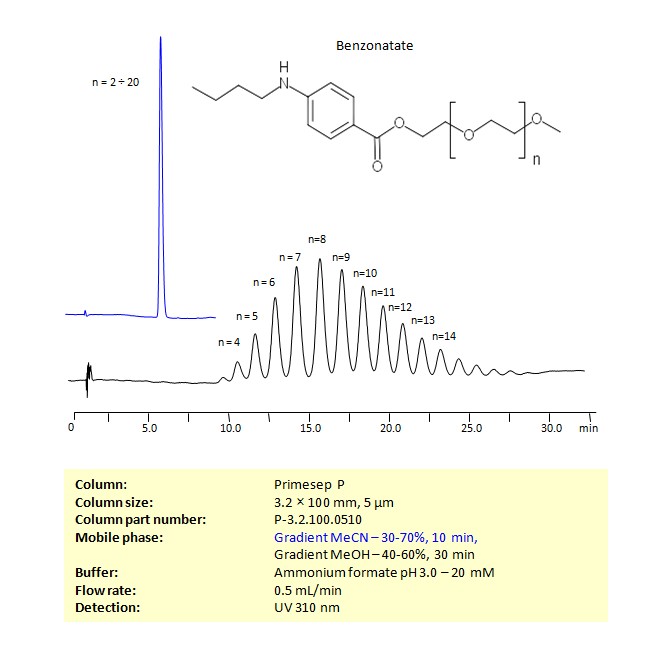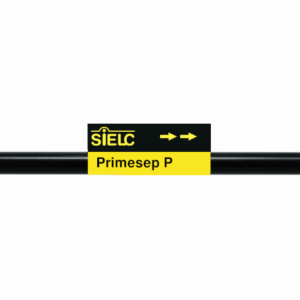HPLC Method for Analysis of Benzonatate on Primesep P by SIELC Technologies

High Performance Liquid Chromatography (HPLC) Method for Analysis of Benzonatate
Benzonatate is a medication commonly used to relieve cough. It belongs to the class of drugs known as antitussives. Antitussives are substances that suppress or relieve coughing. Benzonatate works by numbing the throat and lungs, reducing the cough reflex.
Cough Suppression: Benzonatate is primarily used to relieve cough caused by conditions such as respiratory infections or irritation of the airways.
Mechanism of Action: It works by anesthetizing the stretch receptors in the respiratory passages, lungs, and pleura. This helps reduce the urge to cough.
Dosage: It is typically taken orally in the form of capsules. It’s important not to chew or break the capsules, as this can lead to a numbing sensation in the mouth and throat.
Side Effects: Common side effects may include dizziness, headache, constipation, and upset stomach. Serious allergic reactions are rare but possible.
Caution: It is essential to follow the prescribed dosage and not exceed recommended limits. Overdose can lead to serious side effects, including death.
Precautions: Individuals with a known hypersensitivity or allergic reaction to benzonatate or related compounds should avoid using it.
Benzonatate be retained and analyzed using a Primesep P mixed-mode stationary phase column. The analysis employs an isocratic method with a simple mobile phase comprising water, acetonitrile (MeCN), and Ammonium formate as a buffer. This method allows for detection using UV at 310 nm
| Column | Primesep P, 3.2 x 100 mm, 5 µm, 100 A, dual ended |
| Mobile Phase | Gradient MeCN – 30-70%, 10 min, Gradient MeOH – 40-60%, 30 min |
| Buffer | Ammonium formate pH 3.0 – 20 mM |
| Flow Rate | 0.5 ml/min |
| Detection | UV 310 nm |
| Class of Compounds | Acids, Aromatic carboxylic acids |
| Analyzing Compounds | Benzonatate |
Application Column
Primesep P
Column Diameter: 3.2 mm
Column Length: 100 mm
Particle Size: 5 µm
Pore Size: 100 A
Column options: dual ended





